The Idea of Detournement
The use of known art objects to create new artwork is associated with the concept of detournement. Having used the popular artistic elements, the artist can create an original ensemble which differs significantly in its meaning from previous works (Détournement as Negation and Prelude 2014). The artist uses the technique of detournement to draw the audience’s attention to his specific idea, which is not related to other artistic elements. In contemporary popular culture, artists refer to detournement not only to revise the cultural past but also to accentuate the importance of rejecting the previous meaning of the used artistic elements.
Barbara Kruger is an artist promoting the idea of detournement who works with this technique since the 1970s. “Sex/Lure” (1979) is an example of the detournement where the known photographic image from the print source is supported with words (Barbara Kruger 2014). The work is designed to accentuate the ironical meaning of the text and draw the public’s attention to the role of false ideals in society.
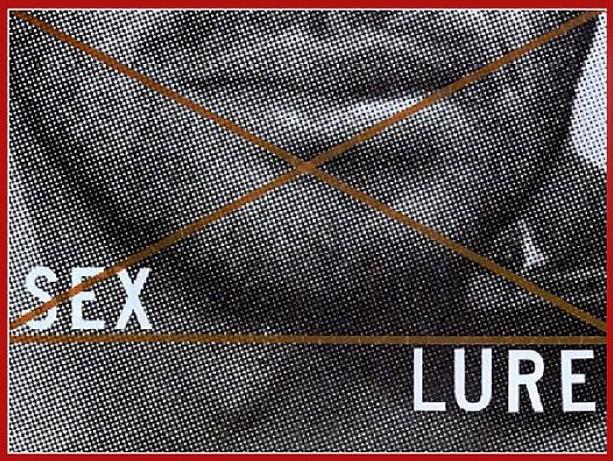
Zevs is a contemporary French artist who follows detournement while presenting Liquidated Logos such as Google Logo (Liquidated Logo 2014). The logos seem to dissolve while accentuating the role of consumerism in popular culture.
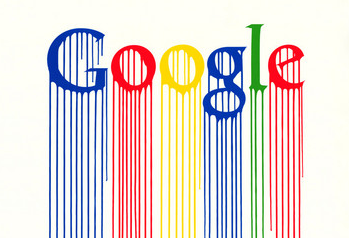
Research on Artists
Artists and Their Works
Glenn Brown
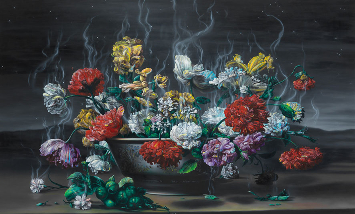
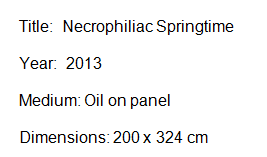
Glenn Brown uses detournement and appropriation in his works while adapting the known artistic elements. Brown’s images seem to be taken from the social subconscious. “Necrophiliac Springtime” reflects the title of Salvador Dalí’s work and presents fleshy objects which demonstrate the decay of nature (Glenn Brown 2014). Brown refers to intensification to support his idea, and depicted flowers seem even to have the specific odour. Brown’s works are impressive because of used contrasts, reminders, and artistic exaggerations.
Kara Walker
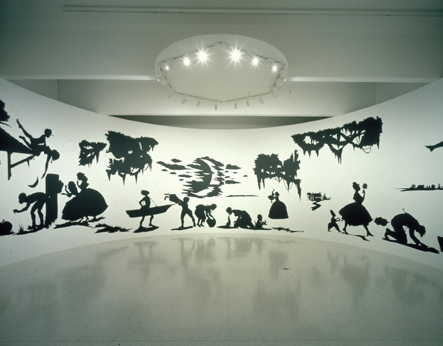
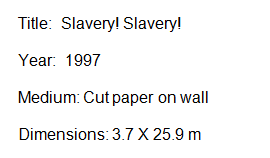
Kara Walker’s works impress because of the used scales, themes, and media. “Slavery! Slavery!” represents the traditional topic of racism and slavery with the help of large-scale exposition. To develop the historical theme, Walker made many cut-paper silhouettes which were located on the gallery’s walls to produce a certain effect on the viewer (Kara Walker 2014). The use of paper-cut silhouettes and portraits is the main distinctive feature of Walker’s work which helps to distinguish her among the other contemporary artists.
Christopher Pease
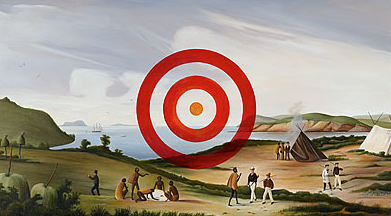
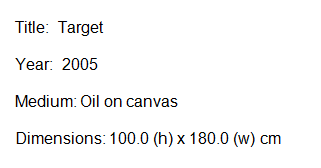
Christopher Pease uses a specific approach to doing artworks which are associated with detournement. The main topic conveyed by Pease in his works is the life of the Indigenous men in Australia. Using the old lithograph and the famous painting “Target”, Pease chose to depict the concentric circles on the old fashioned background in order to accentuate the role of the historical conflict with the help of a symbol (Christopher Pease 2014). As a result, the audience’s attention is drawn to the problems of the Indigenous people who are actively discussed by the artist.
Collage Artists
Jannis Kounellis
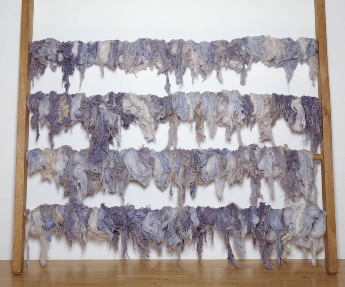
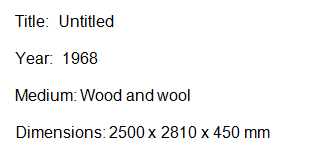
Jannis Kounellis’s collages draw the viewers’ attention significantly because of the author’s use of unusual media. Jannis refers to the juxtaposition of objects while utilising wood and wool in the work of 1968 in order to emphasise the role of the social tensions in modern reality. The used raw materials are used to accentuate the necessity of connections between the traditional culture and the contemporary world (Jannis Kounellis 2014). Furthermore, the use of dyed wool in the collage is also important to accentuate pursuing the desired harmony in the world.
Stelarc
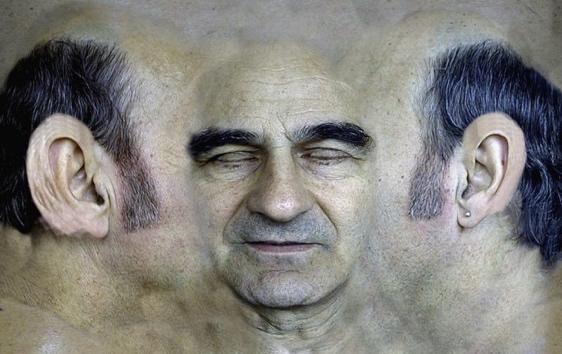
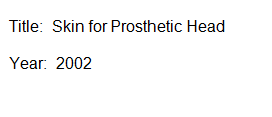
Stelarc is the well-known performance artist who tries to combine human nature and computer or other information technologies in his installations, shows, and collages. “Skin for Prosthetic Head” can be discussed as the representation of the part of Stelarc’s project, the main idea of which is to construct the 3D animated head. This Prosthetic Head is expected to communicate with the viewer while responding to the audience’s reactions (Munster 2006, 131). Stelarc’s works cannot be categorised or classified; that is why they strike the audience significantly because these products of the art world cannot resemble any other objects.
Meret Oppenheim
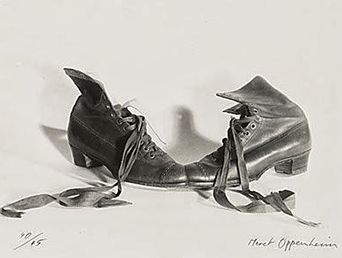

Meret Oppenheim creates collages and installations with the help of specific “surrealist objects” which are associated with the art of Salvador Dalí. Using such ‘symbolic’ objects as shoes, Oppenheim tries to represent her specific vision of reality, which can be emphasised with a lot of usual details (Meret Oppenheim 2014). In her works, the artist seems to combine personal feelings with the usual objects of the real world, which are discussed as the source of the author’s significant inspiration. Meret Oppenheim claims that there are no ‘just’ objects, and all the elements of the real world have the meaning.
Reference List
Barbara Kruger. 2014. ART History. Web.
Christopher Pease. 2014. NGA. Web.
Détournement as Negation and Prelude. 2014. CDDC. Web.
Glenn Brown. 2014. Gagosian. Web.
Jannis Kounellis. 2014. Tate Gallery. Web.
Kara Walker. 2014. Kara Walker Web.
Liquidated Logo. 2014. The Outsiders. Web.
Meret Oppenheim. 2014. Smarthistory. Web.
Munster, Anna. 2006. Materializing New Media: Embodiment in Information Aesthetics. Oxford: UPNE.